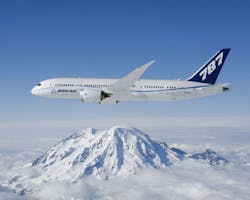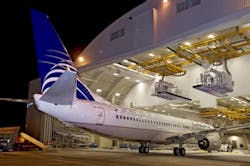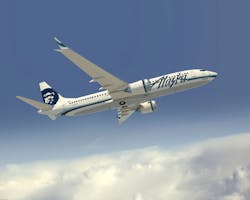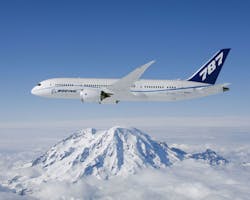Boeing predicts demand for more than 35,000 new airplanes, valued at $4.8 trillion, over next 20 years
PARIS, 12 June 2013. Boeing (NYSE:BA) experts, in the company’s annual Current Market Outlook (CMO), forecasts demand for more than 35,000 new airplanes, valued at $4.8 trillion, over the next 20 years.
The company predicts the world fleet to double over the next two decades, and passenger traffic and cargo traffic to grow five percent annually.
The single-aisle market is the main driver of the forecast and continues to show strength; 24,670 new airplanes will be needed in this segment due to the growth of low-cost carriers and airlines from emerging markets, according to the CMO.
Widebodies also make up a large part of the forecast, with the need for 8,590 new airplanes fueled in part by airlines replacing their older fleet with new, more fuel-efficient airplanes.
New Airplane Deliveries: 2013-2032 | |||
Airplane type | Seats | Total deliveries | Dollar value |
Regional jets | 90 and below | 2,020 | $80B |
Single-aisle | 90 – 230 | 24,670 | $2,290B |
Small wide-body | 200 – 300 | 4,530 | $1,100B |
Medium wide-body | 300 – 400 | 3,300 | $1,090B |
Large wide-body | 400 and above | 760 | $280B |
The market for new airplanes will continue to become more geographically balanced over the next two decades. Asia-Pacific, including China, will lead the way in total airplane deliveries.
New Airplane Deliveries: 2013-2032 | |
Region | Airplane deliveries |
Asia-Pacific | 12,820 |
Europe | 7,460 |
North America | 7,250 |
Latin America | 2,900 |
Middle East | 2,610 |
C.I.S. | 1,170 |
Africa | 1,070 |
World Total | 35,280 |
"This forecast gives us confidence as we increase our production rates and invest in new products like the 777X and 787-10X," says Randy Tinseth, vice president of marketing, Boeing Commercial Airplanes. "Airlines are demanding more efficiency and that is exactly what we'll be giving them."
After facing high and volatile fuel prices and a highly competitive environment, airlines have been forced to change the way they manage their business.
"Our customers are focused on growing their networks, managing their capacity and investing in new fleets," Tinseth adds. "These trends will shape market demand for airplanes that have highly efficiency, low operating costs, environmentally progressive technologies and a great passenger experience."




